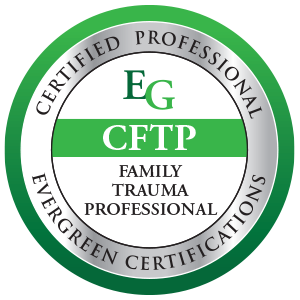Sexual trauma is the exposure to any sexually inappropriate behaviors that cause a person to experience a great deal of stress. This exposure happens without their consent or when consent is not given freely. Related distress is often in the form of fear, anxiety, or depression, although not everyone responds to stress or trauma the same way. Regardless, no one should have to deal with it alone; there is help available.
What Is Sexual Trauma?
Sexual trauma is the exposure to any sexually abusive behaviors. Sexual abuse is any inappropriate, intentional, behavior that is intended to give the offender some form of sexual gratification.1 The behavior could be physical, such being touched or grabbed in a sexual manner, verbal, such as humiliation or threats of sexual acts, or it could be visual, such as being forces to view sexual images or acts. These behaviors could lead someone to being physically hurt, experiencing intense fear, or even being forced into performing sexual acts.
Who Experiences Sexual Assault?
Sexual trauma knows no age, gender, or socioeconomic background; anyone can experience it. Someone is sexually assaulted in America every 73 seconds, and every 9 minutes that someone is a child. Over half of these assaults happen either close to home or in a place where the survivor should feel safe.2
Sexual assault & PTSD
Post-traumatic Stress Disorder (PTSD) refers to a clinical diagnosis associated with a trauma response. PTSD is diagnosed in association with a pattern of symptoms that are a response to the (sexual) trauma. These symptoms involve intrusive and vivid flashbacks, thoughts or even dreams related to the trauma, avoidance or numbing associated to any reminders, such as people, places, or objects, and functional responses, such as poor concentration, gaps in memory, easily startled or jumpy, and hypervigilance.1
Although all who are diagnosed with PTSD have experienced trauma, not all who have experienced trauma or abuse will have PTSD. It is also important to note that many children who have experienced trauma may also have been diagnosed or misdiagnosed with Attention Deficit Hyperactive Disorder (ADHD), as there is overlap between ADHD and sex.
What Is Military Sexual Trauma?
The United States Department of Veterans Affairs defines military sexual trauma (MST) as experiences of sexual assault, or repeated threatening sexual harassment that occurred while a person was in the United States Armed Forces. The Department of Defense estimated that 20,500 Service members were sexually assaulted in 2018; approximately 13,000 were women and 7,500 were men. Of these assaults, only a small fraction were reported.3
Some elements that make MST unique is that Service members have an exceptionally difficult relationship with their offenders. These Service members may have to continue living and working with their offender, and even rely on them for essential things like food, health care, or watching their back on patrol. Also, Service members who have been sexually assaulted may be worried about appearing weak or vulnerable and believe that others would lose respect for them. MST can put service members in a no-win situation and be emotionally difficult for them to report or resolve as veterans.4
The Prevalence of Sexual Trauma
It’s tough to actually know the true numbers around sexual trauma, because only 25% of sexual assault and abuse is reported in this country each year.5 Some incidents of sexual abuse go unreported due to fear for safety, fear that they will not be believed, feelings of shame or guilt, or even denial of their own experiences. And some are simply unable to disclose because they are too young or have other limitations that impact the way they communicate.
Here is additional information on the prevalence of sexual assault in this country:
- Every 73 seconds, an American is sexually assaulted2
- And every 9 minutes, that victim is a child2
- 20.7% of adults report being sexually abused as a child6
- More than 90% of child survivors are sexually abused by someone they know and trust2
- In 2019, 6,236 Service members chose to report a sexual assault compared to the estimated 20,000 offenses7
- 1 in 3 women and 1 in 4 men experienced sexual violence involving physical contact during their lifetimes8
Sexual Trauma Symptoms
Everyone is affected differently by sexual trauma, especially depending on their age and available support system. Survivors of sexual trauma can show signs of PTSD that are physical, behavioral, and/or emotional in nature. It is important not to discredit your experiences, or those of others, because their responses are not in line with “typical” symptoms of survivors.
Signs and symptoms of sexual trauma can include:1,2,6,8
- Changes in sleep pattern (more, less, frequent waking, nightmares, etc.)
- Changes in social behavior or friend group
- Changes in hygiene
- Poor concentration
- Changes in school or work performance
- Changes in mood (depressed, flat or numb, irritable, cries easily, etc.)
- Engaging in self-injurious behaviors.
- Experimenting with substances
- Sexually acting out by children (provocative language/body language, or imitating sexual acts)
The Lasting Effects of Sexual Assault
If left untreated, a person who has experienced sexual abuse is at risk for experiencing long-term effects from their trauma. Experiencing sexual trauma can have lasting negative effects on a person’s health, well-being, and opportunity. In children, adverse childhood experiences (ACEs), such as sexual trauma, are linked to chronic health problems, mental illness, and substance misuse in adulthood.8 This can also negatively impact education and job opportunities for them.
Negative Coping Strategies
Sexual violence has been linked to negative health behaviors, such as increased likelihood to smoke, abuse substances, and engage in risky sexual activity.
Physical Symptoms
Sexual trauma symptoms can manifest physically, such as experiencing reoccurring gynecological, gastrointestinal, cardiovascular, and sexual health problems.
Difficulty Going Back to Normal Life
Readjusting to daily life after experiencing trauma can be challenging as survivors may have difficulty in their personal relationships, in returning to work or school, and in regaining a sense of normalcy and identity. They may also experience sexual anxiety, as even healthy sexual experiences may trigger flashbacks of their trauma.8
Treatment of Sexual Trauma
If you have made the decision to seek support around sexual trauma, there are trained professionals available to assist you. In the event that the trauma involves physical abuse, it is best to seek medical attention as soon as possible. This doctor can not only provide insight and reassurance around physical health and wellness, they can also support you in contacting law enforcement so that a proper investigation can be conducted, if appropriate. A mental health professional, on the other hand, will aid in assessing your needs and provide support around your emotional wellbeing.
Sexual Trauma Therapy
Therapeutic treatment for sexual trauma comes in many different forms. Therapy can create a safe space for a survivor to process their sexual trauma, including challenging the negative and unhelpful thoughts they have developed. Therapy can also provide you with helpful tools and skills that can be used throughout your lifetime to address unrelated stress.
In therapy, the goal for treatment is to support the survivor in minimizing their trauma-related symptoms and to help them control the way the traumatic event and triggers affect them. Essentially, the goal is to help the Survivor become an Overcomer. The following are some of the common modalities that are used by mental health providers, however more models may also be available.
- Psychodynamic therapy focuses on the meaning of the sexual abuse, in terms of the survivor’s sense of self and how they view the world, to gain insight in promoting healing and recovery.
- Trauma Focused Cognitive Behavioral Therapy (TF-CBT) is an evidence-based treatment model for children and adolescents exposed to trauma. This model involves both the child and their caregiver in treatment to develop skills needed to manage emotions and enhance future safety.
- Cognitive Processing Therapy (CPT) is a short term, evidence based cognitive behavioral therapy for those who have experienced trauma. This model focuses on the survivor’s recovery and teaches them how to be their own therapist when future problems arise.
- Eye Movement Desensitization and Reprocessing therapy (EMDR) is a psychotherapy model that helps people to heal from the symptoms and emotional distress of trauma through therapist directed lateral eye movements, hand-tapping, audio stimulation, or a variety of other external stimuli.
- Accelerated Resolution Therapy (ART) is an evidence–based psychotherapy that promotes accelerated recovery by adapting how the brain stores traumatic memories and imagery. This model incorporates memory visualization techniques that are enhanced with horizontal eye movements, as well as memory reconsolidation, which incorporates new information into existing memories.
Medication
The treatment of trauma often includes the prescription of medications to aid in managing physical symptoms. Medications can be prescribed by a primary care physician, psychiatrist, or a psychiatric nurse practitioner. The length of use can be determined through a plan you develop with your prescriber and clinician.
A range of medications have been used to address trauma related symptoms. The form is often determined based on the individual’s specific symptoms. Most often, prescribers choose to use selective serotonin reuptake inhibitors (SSRIs), as they have shown greater benefits in minimizing symptoms. Some studies have also observed limited benefits with the use of monoamine oxidase inhibitors (MAOIs).9
These are two different categories of antidepressants. In addition to their use for depression, antidepressants are indicated to treat anxiety disorders. Sometimes clinicians may use other classes of medication to treat troubling symptoms of PTSD such as insomnia, flashbacks, and nightmares.
SSRIs and MOAIs may not be safe for everyone, especially when there are co-occurring conditions that require medications that may interact negatively with each other. It is best to discuss your concerns and medical history with your prescriber to identify the best option.
How to Get Help for Sexual Trauma
Depending on the form of sexual trauma, it may be best to seek help initially from a medical professional. This will aid in assuring that your physical health will be properly cared for to minimize lasting effects of the trauma. A primary care physician can also answer any medically related concerns or clarify any related misinformation. Your primary care physician can also provide you with names of providers and agencies trained in trauma therapy.
Online therapy directories are also available, in which you may have access to each mental health professional’s bio, including information on the trauma-related treatment models they are trained to use.
Veterans can access a variety of confidential services and treatment through their local VA for free.
How to Get Help for a Child Who Has Experienced Sexual Trauma
There are a few points from Childhelp to keep in mind when a child tells you that they have been sexually abused:6
- Try to stay calm, for their sake. Having a strong reaction, although completely natural, could cause them to stop talking, or recant their disclosure due to shame or fear.
- Don’t try to be the detective; be their support system. Let the professionals ask the questions about what, when, and how. Asking questions could jeopardize the investigation and defense attorneys could discredit their testimony if they were asked “leading” questions about the abuse.
- Be a listening ear and provide support the way you know how. Your child trusts you with this information for a reason and they feel safe telling you.
- If your child has been holding on to this abuse for a long time, they may need to “let it all out.” Let them talk as much as they want to alleviate that burden.
Also, keep in mind, that after a child discloses sexual abuse, it is not uncommon for parents/caregivers to notice and increase in disruptive behaviors. This is often associated with the rush in emotions the child is experiencing associated with their trauma and disclosing, such as shame, fear of retaliation, or fear for the safety of their family members.
Recovering From Sexual Trauma
Recovery from sexual trauma depends on many factors, including the frequency and intensity of the trauma, as well as the treatment and support received. Some of the above-mentioned treatment options are considered short-term models, which estimates treatment completion in an average of 10 sessions for a single incident of trauma.
Here are some tips to aid in the recovery process:
- Develop a plan to continue keeping yourself safe.
- Don’t try to rush the process. Many of the treatment models mentioned have various steps that your clinician will guide you through. Skipping steps or rushing through them will likely affect your full ability to recover.
- Be prepared to do the work. The mental health professional you choose will help guide you through recovery, but you have to be an active participant for that to happen. This also means being consistent with your attendance to therapy sessions; they cannot help you, without you.
- Keep communication open with your care team. If you have questions or concerns about your treatment, its effectiveness, or your therapeutic relationship, it is a good idea to say something to your clinician. It is important for your overall recovery.
- Identify and engage with your support system, such as family, church groups, and support groups.
- Adopt self-care practices that you can engage in regularly. This will be especially useful in helping to regulate your mood.
- Limit substance use and take medication as prescribed. Be mindful of potential interactions between medications and the use of alcohol and other substances. Seek outside help for additional support.



